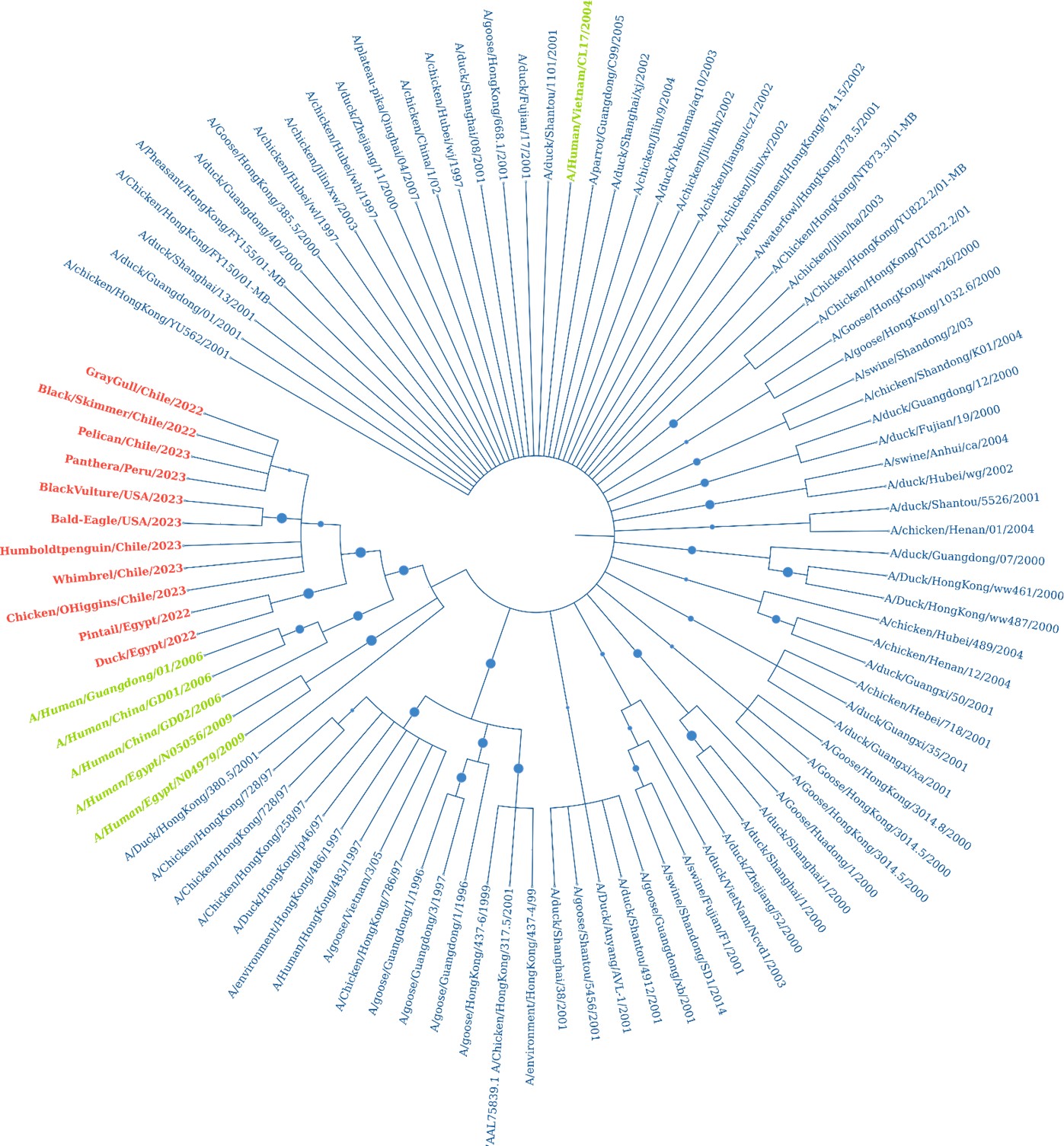Addressing the recent transmission of H5N1 to new animal species and humans, warning of the risks and its relevance in One-Health
Authors: Phelipe Magalhães Duarte, Sarah El-Nakeep, Fatemeh Shayestegan, Sina Salajegheh Tazerji, Yashpal Singh Malik, Paola Roncada, Bruno Tilocca,...., Wolfgang Eisenreich and Awad A. Shehata
Ger. J. Microbiol.
2024.
vol. 4, Iss. 2
pp:39-53
Doi: https://doi.org/10.51585/gjm.2024.2.0036

Abstract:
The primary natural reservoir of the H5N1 avian influenza virus is poultry and wild birds, particularly waterfowl. Nevertheless, the H5N1 virus subtype can potentially infect humans and other mammals, causing severe illness or even death. The virus is commonly transmitted through direct contact with infected birds or exposure to a contaminated environment. Sporadic cases of avian influenza subtype H5 have been reported in various new hosts, such as minks, otters, foxes, and sea lions, with the potential to cause human infection and trigger a global pandemic. Moreover, various hosts have the potential to act as mixing vessels for influenza viruses because they carry both avian and human-type receptors, not just pigs. Recently, highly pathogenic avian influenza H5 was reported in farmed animals such as dairy cattle, suggesting a new potential mixing vessel for influenza; thus, cattle are also widely infected with the genus influenza type D viruses. This underscores the imperative to adopt the One Health approach, fostering collaboration and integration across animal, planetary, and human health disciplines. Indeed, integrating biosecurity and One Health principles impacts the productivity of commercial poultry operations positively and could help mitigate avian influenza outbreaks. This review also provides an in-depth analysis of the contemporary and molecular epidemiology of H5N1 influenza viruses. Moreover, our examination delves into the potential risk of broadening H5N1 host tropism and its significant relevance within the One Health framework.
Keywords:
Influenza, Virus evolution, Interspecies transmission, Mammals, Cattle, One Health
Statistics:
Article Views: 1038
PDF Download: 128